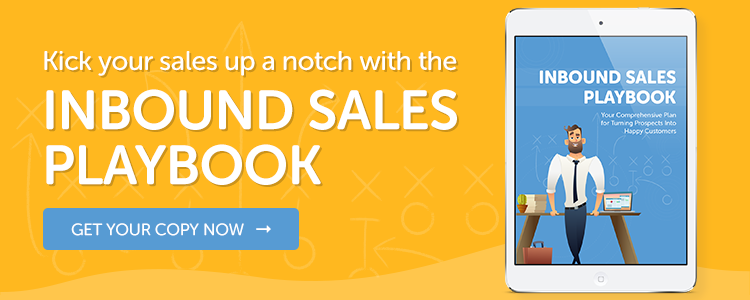Not only are salespeople adapting to everchanging consumer purchasing habits, the tools and techniques they are using are also transforming to provide leads with more relevant and recommended products. Are your teams prepared to take on 2018?
Here are the biggest sales trends of 2018:
1. Personalization of Marketing and Sales
By far, one of the most prominent sales trends in 2018 is personalization. Personalization in sales is aided by personalized content taking over marketing. Marketers collect more information about leads than ever, which is a boon to sales team to tailor their pitches, calls, emails and more to prospects.
How popular is personalization? According to studies cited by McKinsey & Company, "the vast majority of respondents (80 percent) want personalization from retailers."
2. Greater Emphasis on Sales Training
HubSpot revealed training and development is getting renewed attention in this year's sales trends. While many companies do not emphasize sales development -- whether due to lack of time or resources -- businesses are recognizing the importance of providing staff with the training and support they need to do their job well.
In turn for sales staff getting more opportunities for training, companies improve lead qualification that will lead to higher sales.
3. Focus on Account-Based Selling
Account-based selling is on the rise in 2018. Rather than have a blanket approach to business-to-business sales to a mass market, account-based selling involves targeting specific companies that are highly valuable.
Not only does account-based selling encourage salespeople to foster positive relationships with their clients, but also helps the business by reducing costs related to customer acquisition and turnover.
4. More AI and Automation in the Sales Process
Automation is already transforming inbound marketing and naturally sales is following suit to keep up with demand. Forbes Business Development Council noted sales teams are increasingly using artificial intelligence and automation to boost efficiency.
AI and automation is vital in saving sales staff time by collecting data for them so they spend less time making calls and more on making sales.
5. Targeting the Middle of the Funnel
The middle of the funnel is one of the most crucial, but often there are plenty of mistakes made because this is where different departments -- marketing and sales -- collide. HubSpot recommended looking at the middle of the funnel closely.
Since the middle of the funnel is where the marketing team typically provides lead information to the sales staff, any miscommunication during this transition could reduce the chances of leads taking the next steps toward the end of the funnel.
To avoid problems down the road, troubleshoot potential issues with leads before handing off data to the sales staff. These include marketers sending low-quality leads and the sales team not knowing whether leads are nurtured enough to take the next step.
For example, the marketing team can filter and sort leads by relevant information -- target demographic, income, job/title, etc. -- to ensure only high-quality leads are passed on to salespeople. Or marketers can add notes directed to the sales team of how long leads have been in the funnel and other related information that can help salespeople with future points of contact -- making warm calls instead of cold.
Finally, both teams should have realistic expectations about the number of leads handed off between them, where in the funnel leads should be before they are shared with salespeople and other criteria that must be clearly communicated.
6. Instant Communication Between Sales and Leads
When prospects have a few questions right before they’re ready to buy, they usually want answers fast. But many companies are slow to respond to online sales leads, diminishing lead interest by the minute.
Harvard Business Review found 24 percent of companies surveyed took more than 24 hours to respond to online leads. Even worse, 23 percent of companies did not send a reply. As part of this year's sales trends, companies are working to shorten response times for leads.
Harvard Business Review revealed a strong correlation between lead qualification success and response times, saying firms that responded to leads within one hour were almost seven times more likely to qualify a lead.
There are several channels for leads to communicate with your company quickly:
- Social media. Consumers are increasingly using business social media pages to ask questions about products and services before they buy so they get answers fast.
- Messaging apps. HubSpot highlighted WhatsApp and Messenger as apps of choice for communicating with prospects.
- Live chat. A live chat feature is another option in demand by consumers so they can get an immediate answer as opposed to waiting to speak to someone on the phone.
- Text. With more leads on the go, texting is becoming popular and even the preferred method of communication compared to email for some.
Trends are a tricky thing... they come and they go, however, the 6 on these list don't look like they are going anywhere any time soon. These 6 sales trends are what you need to watch / implement this year.


Rob Steffens
I am the Director of Marketing here at Bluleadz. I'm a huge baseball fan (Go Yankees!). I love spending time with friends and getting some exercise on the Racquetball court.